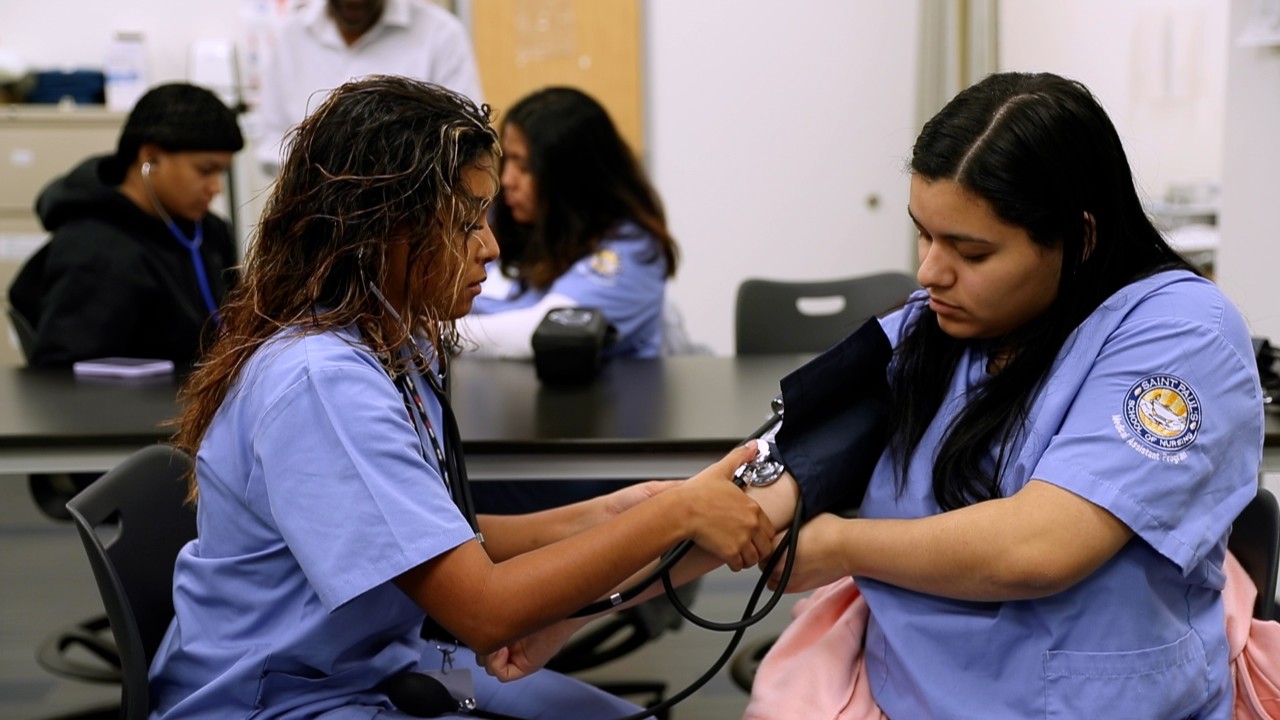With the US aging population poised to outnumber children under 18 by 2034, healthcare is a booming field, particularly in New York City. Nationally, employment for medical assistants is projected to grow 16% between now and 2031, much faster than other occupations, according to the US Bureau of Labor Statistics. And the New York-New Jersey area ranks #1 in the nation for metropolitan areas with a very robust employment level of medical assistants. That means St. Paul’s School of Nursing could position you well for a career in the New York City region, where your skills could be in demand for years to come (demand for these skills is high nearly everywhere).
Medical assistants are the backbone of medical offices, playing an integral role in delivering healthcare services to patients. If you’re a people person with good organizational skills, this field might be a good choice for you. Or if you’ve been considering medicine but aren’t sure about making the leap, becoming a medical assistant is a great way to test out the field.
Medical assistants work in all kinds of settings, but mainly in outpatient settings such as physician offices, optometrist offices, orthopedic offices, labs, college student health centers, urgent care facilities, and assisted living facilities. Most MAs work in physician offices, according to the Bureau of Labor and Statistics.
Medical assistants are an important part of the medical team because they handle both administrative tasks and patient care, serving as a liaison between the patient and the medical staff. Are you a people person? One of the main parts of the job is interacting directly with patients. You’re the first person to see them, get them settled in the patient room, and take basic vitals, like their weight, height, blood pressure, and temperature. You’re an important part of their experience. While you’re not allowed to diagnose or treat a patient, it’s possible you could also handle small medical procedures like administering medications or giving a shot.
In other offices, such as an optometrist’s office, your patient care will look a little different. There, you might handle things like glaucoma testing, contact lens fittings, or fitting for new glasses. In an orthopedic office, clinical duties might include taking vital statistics, preparing lab samples, and educating patients on an injury and treatment options.
Behind the scenes, you handle key administrative tasks, like scheduling appointments, recording patient histories, filing patient charts, and filling out insurance forms. This work requires attention to detail and organizational skills. The office relies on your skills to keep patient information accurate and up to date. If that’s you, this field could be a great choice.
If you are interested in learning more about the role and opportunities of being a medical assistant, visit St. Paul’s School of Nursing medical assistant program page or call 1-855-822-3018 to speak to one of our admissions representatives. Schedule a tour at one of our campuses, either in Queens or Staten Island. Get started today!

